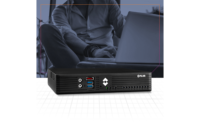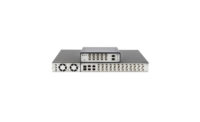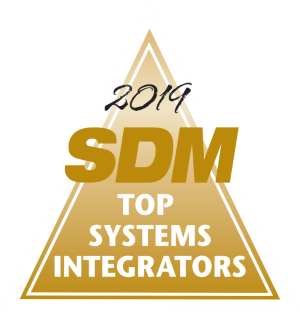
|
|
Contributed by the Custom Electronic Design & Installation Association. To learn more about CEDIA membership visit www.cedia.org/join. |
As homeowners seek to have wireless automation and security systems accessible through mobile devices, security professionals working in the home have more opportunities to find new and recurring revenue streams in the IP and networking businesses.
When asked to integrate these types of systems, home technology professionals should make the case to the consumer for why a more advanced (and more expensive) home network infrastructure is necessary compared with conventional residential options, according to Anand Gautam, CEDIA technical writing and research manager.
“It’s important to convey that an automation system is absolutely dependent on the network infrastructure,” he said.
More consumer electronics products will be network-enabled in coming years, including washing machines, refrigerators and other appliances — increasing the need for a stable, secure and robust network that only a high-level system can truly provide.
“The long life expectancy of an enterprise-grade networking solution and its ability to take on more and more overhead is powerful when properly presented,” Gautam said.
Enterprise-grade wireless controllers are especially important for a networked home that uses mobile devices such as tablets and smartphones. They last longer compared with consumer-grade equipment, have less latency, and provide good coverage so the user can roam from one area of the house to another without losing the connection.
A wireless controller allows for remote access to the network and provides a centralized management option for dealing with problems such as interference and Wi-Fi signal strength throughout the entire home. Being able to monitor the network remotely, and diagnose and fix issues can eliminate the cost of rolling a truck and can lead to monthly recurring revenues.
With home security systems increasingly relying on wireless, the case for a stronger infrastructure is even easier to make. Good security, through data encryption and authentication, protects the wireless system while the client stays happy with an efficient, uninterrupted system.
Guest access controls allow for customers to isolate guests from homeowner devices — for example, permitting Internet access while keeping them off of the full network.
Two CEDIA white papers have been published recently on this topic; both are available in the CEDIA Marketplace (www.cedia.org/marketplace).
The first white paper, The Business Case: Why Your Business Needs an Enterprise-Grade Wireless Infrastructure Strategy, examines and recommends best practices for the adoption of mobile devices as a core part of a company’s strategy for a converged Internet-protocol ecosystem in the home.
The second white paper, Ten Steps to Creating a Robust Wireless Environment, provides home technology professionals with the 10 steps necessary for success when deploying Wi-Fi infrastructures.
From needs analysis to wireless security and encryption, this whitepaper covers a whole gamut of relevant topics. The white papers are available free of charge for CEDIA members and can be purchased by non-members for $9.99. Additional white papers in this series will be released throughout 2012.
A few archived webinars also are available for home technology professionals who want to get a jump-start on their IP and networking education.
The CEDIA University course, EST243: IP for Technicians, is available online as an archived webinar delivered in three one-hour segments. This course will help lay the groundwork for additional courses that are offered. Visit www.cedia.org/elearning for more information.
In addition, this year at CEDIA EXPO a new residential networking specialist credential will be available; computer labs have been tripled and three new advanced courses on networking and IP have been added. Visit www.cedia.org/expo for more information.










